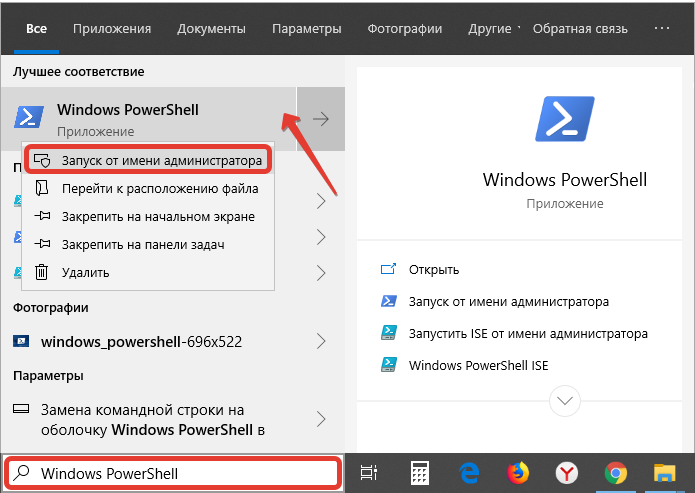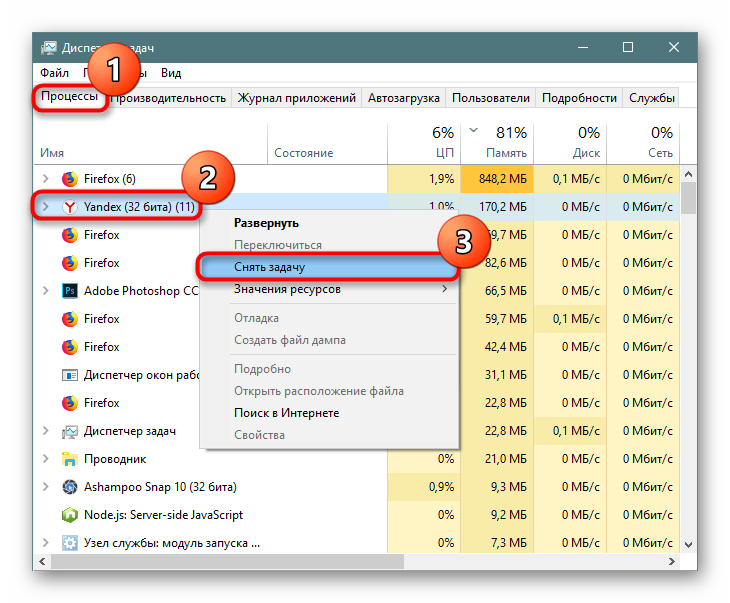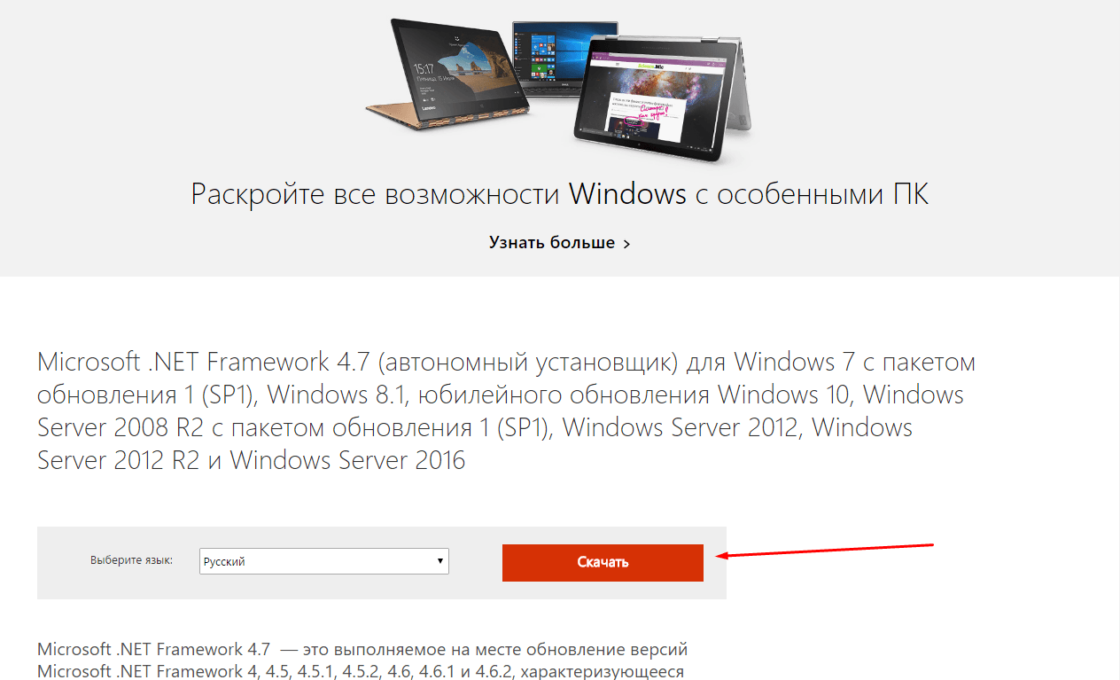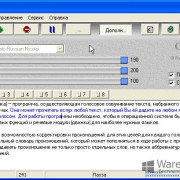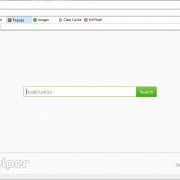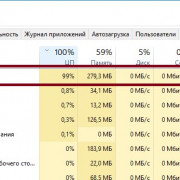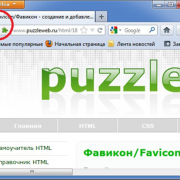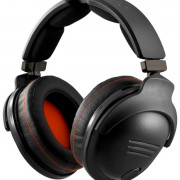Установка, обновление и удаление net.framework
Содержание:
- Процесс установки
- Remarks for version 4.5 and later
- Features of the common language runtime
- .NET Framework class library
- Скачайте Microsoft .NET Framework для Windows 7 на русском бесплатно
- Architecture of .NET Framework
- .NET Framework FAQ
- What is .NET Framework used for?
- Who uses .NET Framework?
- Why do I need .NET Framework?
- How does .NET Framework work?
- What are the main components/features of .NET Framework?
- What is the difference between .NET Core and .NET Framework?
- Can you have multiple .NET Frameworks installed?
- How much does .NET Framework cost?
- Which version of .NET Framework should I use?
- What is the support policy for .NET Framework?
- Remarks for older versions
- Следующие шагиNext steps
- Процесс обновления
- Программа ASoft .NET Version Detector
- Процесс удаления
Процесс установки
Как и любое другое программное приложение, NET.Framework можно установить, если имеется в наличии загрузочный файл, который можно найти, воспользовавшись интернетом
Только при осуществлении поиска важно помнить, что для корректной работы приложений желательно инсталлировать самые новые версии любого программного продукта, в том числе и платформы NET.Framework
Закачав инсталляционный файл, прежде чем приступить к практическим действиям, неопытным пользователям рекомендуют изучить информацию, как установить NET Framework. Это позволит избежать серьёзных ошибок.
Алгоритм установки
В настоящее время практически каждый компьютер, оснащённый операционной системой Windows, уже имеет проинсталлированную платформу определённой версии. Однако, невзирая на это, часть приложений отказывается устанавливаться. Это случается по той причине, что установленная версия устарела.
Чтобы устранить такие проблемы, важно установить версию NET.Framework, рекомендуемую разработчиками программного приложения, которое требуется установить на ПК
Сам процесс установки несложен, если не пропускать ни одного шага алгоритма. Первоначально следует сохранить скачанный предварительно загрузочный файл на компьютер, затем кликнуть правой клавишей мыши по нему, а в открывшемся окне выбрать строку «Запуск от имени администратора». Некоторые версии NET.Framework невозможно установить, если не выбрать этот важный параметр.
После этого начнётся распаковка загрузочных файлов, после чего на экране появится значок NET.Framework, ориентирующий пользователя на то, что процесс инсталляции запущен.
В следующем окне важно поставить галочку напротив фразы «Я прочитал и принимаю условия лицензионного соглашения», после этого нажать на кнопку «Установить». Далее следует запастись небольшим терпением и просто наблюдать, как платформа устанавливается на компьютер
Процесс установки сопровождается серой строкой, которая постепенно заполняется зелёным цветом. Как только она полностью станет зелёной, установка завершается, а система предложит осуществить перезагрузку
Далее следует запастись небольшим терпением и просто наблюдать, как платформа устанавливается на компьютер. Процесс установки сопровождается серой строкой, которая постепенно заполняется зелёным цветом. Как только она полностью станет зелёной, установка завершается, а система предложит осуществить перезагрузку.
Перезагрузить компьютер очень важно, поскольку большинство программ и приложений в этом остро нуждаются, иначе система просто не будет видеть внесённых изменений
Remarks for version 4.5 and later
.NET Framework 4.5 is an in-place update that replaces .NET Framework 4 on your computer, and similarly, .NET Framework 4.5.1, 4.5.2, 4.6, 4.6.1, 4.6.2, 4.7, 4.7.1, 4.7.2, and 4.8 are in-place updates to .NET Framework 4.5. In-place update means that they use the same runtime version, but the assembly versions are updated and include new types and members. After you install one of these updates, your .NET Framework 4, .NET Framework 4.5, .NET Framework 4.6, or .NET Framework 4.7 apps should continue to run without requiring recompilation. However, the reverse is not true. We do not recommend running apps that target a later version of .NET Framework on an earlier version. For example, we do not recommend that you run an app the targets .NET Framework 4.6 on .NET Framework 4.5.
The following guidelines apply:
-
In Visual Studio, you can choose .NET Framework 4.5 as the target framework for a project (this sets the GetReferenceAssemblyPaths.TargetFrameworkMoniker property) to compile the project as a .NET Framework 4.5 assembly or executable. This assembly or executable can then be used on any computer that has the .NET Framework 4.5, 4.5.1, 4.5.2, 4.6, 4.6.1, 4.6.2, 4.7, 4.7.1, 4.7.2, or 4.8 installed.
-
In Visual Studio, you can choose .NET Framework 4.5.1 as the target framework for a project to compile it as a .NET Framework 4.5.1 assembly or executable. Only run this assembly or executable on computers that have .NET Framework 4.5.1 or later installed. An executable that targets .NET Framework 4.5.1 will be blocked from running on a computer that only has an earlier version of .NET Framework, such as .NET Framework 4.5, installed. The user will be prompted to install .NET Framework 4.5.1. In addition, .NET Framework 4.5.1 assemblies should not be called from an app that targets an earlier version of .NET Framework, such as .NET Framework 4.5.
Note
.NET Framework 4.5.1 and .NET Framework 4.5 are used here only as examples. The principle described applies to any app that targets a later version of .NET Framework than the one installed on the system on which it’s running.
Some changes in .NET Framework may require changes to your app code; see Application Compatibility before you run your existing apps with .NET Framework 4.5 or later versions. For more information about installing the current version, see Install the .NET Framework for developers. For information about support for the .NET Framework, see .NET Framework official support policy on the .NET website.
Features of the common language runtime
The common language runtime manages memory, thread execution, code execution, code safety verification, compilation, and other system services. These features are intrinsic to the managed code that runs on the common language runtime.
Regarding security, managed components are awarded varying degrees of trust, depending on a number of factors that include their origin (such as the Internet, enterprise network, or local computer). This means that a managed component might or might not be able to perform file-access operations, registry-access operations, or other sensitive functions, even if it’s used in the same active app.
The runtime also enforces code robustness by implementing a strict type-and-code-verification infrastructure called the common type system (CTS). The CTS ensures that all managed code is self-describing. The various Microsoft and third-party language compilers generate managed code that conforms to the CTS. This means that managed code can consume other managed types and instances, while strictly enforcing type fidelity and type safety.
In addition, the managed environment of the runtime eliminates many common software issues. For example, the runtime automatically handles object layout and manages references to objects, releasing them when they are no longer being used. This automatic memory management resolves the two most common app errors, memory leaks and invalid memory references.
The runtime also accelerates developer productivity. For example, programmers write apps in their development language of choice yet take full advantage of the runtime, the class library, and components written in other languages by other developers. Any compiler vendor who chooses to target the runtime can do so. Language compilers that target the .NET Framework make the features of the .NET Framework available to existing code written in that language, greatly easing the migration process for existing apps.
While the runtime is designed for the software of the future, it also supports software of today and yesterday. Interoperability between managed and unmanaged code enables developers to continue to use necessary COM components and DLLs.
The runtime is designed to enhance performance. Although the common language runtime provides many standard runtime services, managed code is never interpreted. A feature called just-in-time (JIT) compiling enables all managed code to run in the native machine language of the system on which it’s executing. Meanwhile, the memory manager removes the possibilities of fragmented memory and increases memory locality-of-reference to further increase performance.
Finally, the runtime can be hosted by high-performance, server-side apps, such as Microsoft SQL Server and Internet Information Services (IIS). This infrastructure enables you to use managed code to write your business logic, while still enjoying the superior performance of the industry’s best enterprise servers that support runtime hosting.
.NET Framework class library
The .NET Framework class library is a collection of reusable types that tightly integrate with the common language runtime. The class library is object oriented, providing types from which your own managed code derives functionality. This not only makes the .NET Framework types easy to use but also reduces the time associated with learning new features of the .NET Framework. In addition, third-party components integrate seamlessly with classes in the .NET Framework.
For example, the .NET Framework collection classes implement a set of interfaces for developing your own collection classes. Your collection classes blend seamlessly with the classes in the .NET Framework.
As you would expect from an object-oriented class library, the .NET Framework types enable you to accomplish a range of common programming tasks, including string management, data collection, database connectivity, and file access. In addition to these common tasks, the class library includes types that support a variety of specialized development scenarios. You can use .NET Framework to develop the following types of apps and services:
-
Console apps. See Building Console Applications.
-
Windows GUI apps (Windows Forms). See Windows Forms.
-
Windows Presentation Foundation (WPF) apps. See Windows Presentation Foundation.
-
ASP.NET apps. See Web Applications with ASP.NET.
-
Windows services. See Introduction to Windows Service Applications.
-
Service-oriented apps using Windows Communication Foundation (WCF). See Service-Oriented Applications with WCF.
-
Workflow-enabled apps using Windows Workflow Foundation (WF). See Windows Workflow Foundation.
The Windows Forms classes are a comprehensive set of reusable types that vastly simplify Windows GUI development. If you write an ASP.NET Web Form app, you can use the Web Forms classes.
Скачайте Microsoft .NET Framework для Windows 7 на русском бесплатно
| Версия | Платформа | Язык | Размер | Формат | Загрузка |
|---|---|---|---|---|---|
| * скачайте бесплатно Microsoft .NET Framework для Windows, файл проверен! | |||||
|
Microsoft .NET Framework 4.5 |
Windows 7 |
Русский | 1MB | .exe |
Скачать |
|
Microsoft .NET Framework 4 |
Windows | Русский | 0.9MB | .exe |
Скачать |
|
Microsoft .NET Framework 4.6 |
Windows | Русский | 1.5MB | .exe |
Скачать |
|
Microsoft .NET Framework 3.5 |
Windows | Русский | 2.9MB | .exe |
Скачать |
|
Microsoft .NET Framework последняя версия |
Windows | Русский | 1MB | .exe |
Скачать |
|
Microsoft .NET Framework 4.7 |
Windows | Русский | 1MB | .exe |
Скачать |
Обзор Microsoft .NET Framework
Microsoft .NET Framework – программная платформа на базе CLR, создающая условия для разработки и установки компьютерного ПО. Содержит системные компоненты и библиотеки, необходимые для работы с приложениями, обеспечивает взаимодействие с данными, расположенными на локальных дисках и в сети. Платформа адаптирована для среды Windows, начиная с версии 7 является составной частью ОС.
Скриншоты
Похожие программы
SpeedFan
Google Earth
DirectX — пакет библиотек, необходимый системе для работы с мультимедиа
ArtMoney
Andy
Hamachi
Tunngle
Game Maker Studio — разработка игр и приложений под различные платформы
IObit Malware Fighter — для удаления вредоносных программ – троянов, кейлоггеров
Mobogenie
Nokia PC Suite
BlueStacks — программа для запуска android приложение на windows
360 Total Security — условно-бесплатное антивирусное программное обеспечение
Fences
Hotspot Shield
7-Zip — бесплатный архиватор для windows
Origin
CPU-Z
Driver Booster Free — программа для поиска и установки новых драйверов
Acronis Disk Director — пакет инструментов для работы с жесткими дисками компьютера
DriverPack Solution — для автоматической установки и обновления драйверов
Cheat Engine
VirtualBox — создание вирутальных машин
Reg Organizer — программное обеспечение для оптимизации и очистки компьютера
Bandicam — программа для снятия скриншотов и записи видео с экрана
Nox App Player — программа для запуска андроид игр и приложений на windows
2GIS
Razer Game Booster — программа для отключения неиспользуемых процессов
Punto Switcher
Radmin
Mathcad
Ammyy Admin
3DMark
Action!
FurMark
Xpadder
Adobe Dreamweaver
Driver Genius — сканирования и обновление драйверов на компьютере
PowerDVD — проигрыватель мультимедийных файлов
CheMax
GOM Player — медиапроигрыватель для Windows
FBReader
Cool Reader
Samsung Kies — подключение телефонов и смартфонов компании Samsung к ПК
Connectify Hotspot
MyPublicWiFi
Nero Burning ROM
Free Studio — пакет объединяющий более 40 мультимедийных программ
WinSCP
ImgBurn
FB2 Reader
FastStone Capture
EasyBCD
STDU Viewer
NVIDIA PhysX
ManyCam
Dropbox
Adguard
Dr.Web CureIt! — бесплатная утилита для лечения компьютера от вредоносного ПО
Яндекс.Диск
Kaspersky Free — бесплатная версия антивируса от лаборатории Касперского
NOD32 — хороший антивирус для компьютера
iTunes — программа для синхронизации между мобильными устройствами Apple
Rufus
PRO100
Arduino
CGMiner
Maple
Visual Studio
Bitcoin Core
Глаз.ТВ
Kingo Root
Scratch
Charles
NVIDIA GeForce
MinerGate
Microsoft .NET Framework — платформа создающая условия установки компьютерного ПО
Eclipse
NVIDIA Inspector — для работы с графической подсистемой
HWMonitor
Core Temp
Display Driver Uninstaller — для удаления устаревших драйверов видеокарт
VueScan
CrystalDiskInfo — диагностическая утилита для проверки жестких дисков
HDD Low Level Format Tool — утилита, предназначенная для форматирования жестких дисков
Ускоритель компьютера — оптимизация операционной системы Windows
Classic Shell
WinThruster — оптимизация операционных систем семейства Windows
Avast Free Antivirus — бесплатный Аваст антивирус для компьютера
Mcafee — антивирусная программа, для защиты компьютера от внешних угроз
Intel Driver
ASUS Update — утилита, предназначенная для обновления BIOS на компьютере
Clownfish
Evernote
GeForce Experience — автоматического поиск драйверов видеокарт компании Nvidia
Облако Mail.ru
CPU Control
Microsoft Security Essentials — антивирус для защищиты операционной системы
ActiveSync
BlueSoleil
Malwarebytes Anti-Malware — частично бесплатная антивирусная утилита
TV Player Classic
CyberGhost VPN
RivaTuner
PuTTY
Trend Micro HijackThis
Supremo
Rainmeter
RocketDock
Lightshot
TunnelBear
AMD Catalyst Control Center — программа для настройки видеокарт AMD Radeon
Аудио | Видео программы
Графические программы
Microsoft Office
Игры
Интернет программы
Диски и Файлы
Architecture of .NET Framework
The two major components of .NET Framework are the Common Language Runtime and the .NET Framework Class Library.
- The Common Language Runtime (CLR) is the execution engine that handles running applications. It provides services like thread management, garbage collection, type-safety, exception handling, and more.
- The Class Library provides a set of APIs and types for common functionality. It provides types for strings, dates, numbers, etc. The Class Library includes APIs for reading and writing files, connecting to databases, drawing, and more.
.NET applications are written in the C#, F#, or Visual Basic programming language. Code is compiled into a language-agnostic Common Intermediate Language (CIL). Compiled code is stored in assemblies—files with a .dll or .exe file extension.
When an app runs, the CLR takes the assembly and uses a just-in-time compiler (JIT) to turn it into machine code that can execute on the specific architecture of the computer it is running on.
.NET Framework FAQ
What is .NET Framework used for?
.NET Framework is used to create and run software applications. .NET apps can run on many operating systems, using different implementations of .NET. .NET Framework is used for running .NET apps on Windows.
Who uses .NET Framework?
Software developers and the users of their applications both use .NET Framework:
- Users of applications built with the .NET Framework need to have .NET Framework installed. In most cases, .NET Framework is already installed with Windows. If needed, you can download .NET Framework.
- Software developers use .NET Framework to build many different types of applications—websites, services, desktop apps, and more with Visual Studio. Visual Studio is an integrated development environment (IDE) that provides development productivity tools and debugging capabilities. See the .NET customer showcase for examples of what people are building with .NET.
Why do I need .NET Framework?
You need .NET Framework installed in order to run applications on Windows that were created using .NET Framework. It is already included in many versions of Windows. You only need to download and install .NET Framework if prompted to do so.
How does .NET Framework work?
.NET Framework applications are written in C#, F#, or Visual Basic and compiled to Common Intermediate Language (CIL). The Common Language Runtime (CLR) runs .NET applications on a given machine, converting the CIL to machine code. See for more info.
What are the main components/features of .NET Framework?
The two major components of .NET Framework are the Common Language Runtime (CLR) and the .NET Framework Class Library. The CLR is the execution engine that handles running applications. The Class Library provides a set of APIs and types for common functionality. See for more info.
What is the difference between .NET Core and .NET Framework?
.NET Core and .NET Framework share many of the same components and you can share code across the two. Some key differences include:
- .NET Core is cross-platform and runs on Linux, macOS, and Windows. .NET Framework only runs on Windows.
- .NET Core is open-source and accepts contributions from the community. The .NET Framework source code is available, but does not take direct contributions.
- The majority of .NET innovation happens in .NET Core.
- .NET Framework is included in Windows and automatically updated machine-wide by Windows Update. .NET Core is shipped independently.
See Choosing between .NET Core and .NET Framework for more details.
Can you have multiple .NET Frameworks installed?
Some versions of .NET Framework are installed side-by-side, while others will upgrade an existing version (known as an in-place update). In-place updates occur when two .NET Framework versions share the same CLR version.
For example, installing .NET Framework 4.8 on a machine with .NET Framework 4.7.2 and 3.5 installed will perform an in-place update of the 4.7.2 installation and leave 3.5 installed separately.
| .NET Framework version | CLR version |
|---|---|
| .NET Framework 4.x | 4.0 |
| .NET Framework 2.x and 3.x | 2.0 |
| .NET Framework 1.1 | 1.1 |
| .NET Framework 1.0 | 1.0 |
How much does .NET Framework cost?
.NET Framework is free, like the rest of the .NET platform. There are no fees or licensing costs, including for commercial use. See .NET is free for more details.
Which version of .NET Framework should I use?
In most cases, you should use the latest stable release. Currently, that’s .NET Framework 4.8 .
Applications that were created with any 4.x version of .NET Framework will run on .NET Framework 4.8 . To run an application that was created for an earlier version (for example, .NET Framework 3.5), you should install that version. See Download .NET Framework for a complete list.
What is the support policy for .NET Framework?
.NET Framework 4.8 is the latest version of .NET Framework and will continue to be distributed with future releases of Windows. As long as it is installed on a supported version of Windows, .NET Framework 4.8 will continue to also be supported.
Remarks for older versions
.NET Framework versions 2.0, 3.0, and 3.5 are built with the same version of the CLR (CLR 2.0). These versions represent successive layers of a single installation. Each version is built incrementally on top of the earlier versions. It’s not possible to run versions 2.0, 3.0, and 3.5 side by side on a computer. When you install version 3.5, you get the 2.0 and 3.0 layers automatically, and apps that were built for versions 2.0, 3.0, and 3.5 can all run on version 3.5. However, .NET Framework 4 ends this layering approach, and it and later releases (.NET Framework 4.5, 4.5.1, 4.5.2, 4.6, 4.6.1, 4.6.2, 4.7, 4.7.1, 4.7.2, and 4.8) also represent successive layers of a single installation. Starting with .NET Framework 4, you can use in-process, side by side hosting to run multiple versions of the CLR in a single process. For more information, see Assemblies and Side-by-Side Execution.
In addition, if your app targets version 2.0, 3.0, or 3.5, your users may be required to enable .NET Framework 3.5 on a Windows 8, Windows 8.1, or Windows 10 computer before they can run your app. For more information, see Install the .NET Framework 3.5 on Windows 10, Windows 8.1, and Windows 8.
Следующие шагиNext steps
-
Если у вас отсутствует опыт работы с .NET Framework, ознакомьтесь с общими сведениями об этой платформе, основными понятиями и ключевыми функциями.If you’re new to the .NET Framework, see the overview for an introduction to key concepts and features.
-
Сведения о новых функциях и улучшениях в .NET Framework 4.5 и ее доработанных выпусках см. в разделе Новые возможности в .NET Framework.For new features and improvements in the .NET Framework 4.5 and its point releases, see What’s new in the .NET Framework.
-
Сведения о миграции приложения на более новую версию платформы .NET Framework см. в руководстве по миграции.For information about migrating your app to a newer version of the .NET Framework, see the migration guide.
-
Сведения об определении версий или обновлений, установленных на компьютере, см. в разделах Практическое руководство. Определение установленных версий .NET Framework и Практическое руководство. Определение установленных обновлений .NET Framework.For information about determining which versions or updates are installed on a computer, see How to: Determine Which .NET Framework Versions Are Installed and How to: Determine Which .NET Framework Updates Are Installed.
Процесс обновления
Случается и так, что, даже понимая, что такое NET Framework, установив его на компьютер, пользователи всё же сталкиваются с определёнными проблемами. Связаны такие затруднения с тем, что установить Фреймворк удалось пользователю успешно, но только это случилось достаточно давно. За весьма продолжительное время появились новые версии Фреймворк, на которые ориентированы новые приложения. Естественно, в этом случае установить их не удастся, поскольку платформа не отвечает выдвигаемым требованиям.
Именно в связи с этим возникает желание узнать, как обновить NET Framework.
Проблемы обновления
Желая обновить NET.Framework, пользователь также может столкнуться с проблемами, поскольку сам принцип обновления несколько отличается от такого же процесса, но ориентированного на другое программное обеспечение.
В частности, многие программы достаточно запустить, далее кликнуть по строке «Обновить», как будут дополнительно проинсталлированы только недостающие файлы, также обновятся базы, после чего программа сразу же обозначится новой версией.
К сожалению, применить такую же схему к NET.Framework не удастся. Разработчики указывают на то, что в реальности можно только удалить старые версии и установить новую, которую предварительно удалось закачать и сохранить на жёстком диске.
В связи с этим, если имеется такое желание, важно воспользоваться первоначально алгоритмом удаления, а потом сразу же алгоритмом установки платформы. Итак, осознавая, насколько важна актуальная версия платформы NET.Framework, пользователь может самостоятельно осуществить ряд последовательных действий, завершив которые удастся достичь поставленных целей
Итак, осознавая, насколько важна актуальная версия платформы NET.Framework, пользователь может самостоятельно осуществить ряд последовательных действий, завершив которые удастся достичь поставленных целей.
Программа ASoft .NET Version Detector
После запуска этой утилиты Вы увидите, на первый взгляд, непонятное разноцветное окно…
…но на самом деле всё очень просто. Белым шрифтом показаны уже установленные у Вас версии программной среды, а серым — не установленные.
В большинстве случаев, последний (самый новый) пакет содержит в себе наиболее важные части предыдущих версий, но встречаются «особенно вредные» программы, которым подавай именно полную версию 1.0 или 1.1.
Обновить Microsoft .NET Framework или скачать определённую версию можно кликнув по зелёному значку со стрелкой вниз…
Вас перекинет на официальную страницу загрузки автономного установщика…
Такой инсталлятор можно скопировать на флешку и установить на любой компьютер, даже без подключения к сети Интернет.
Как видите на скриншотах вверху — у меня установлена самая актуальная версия Microsoft .NET Framework. Современная Windows 10 очень тщательно следит за этим. Если же у Вас отключено автоматическое обновление системы или Ваша «операционка» не такая умная, как «десятка» — ASoft .NET Version Detector спасёт положение.
Процесс удаления
В результате некорректной установки предыдущей версии Фреймворк или повреждения его системных файлов, возникает необходимость заново осуществить инсталляцию NET.Framework.
Многие пользователи могут находиться в заблуждении, полагая, что удалить Фреймворк можно легко и быстро. Однако, приступив к практическим действиям, сталкиваются с затруднениями, которые самостоятельно разрешить не удаётся, поэтому пользователи стараются разыскать информацию, как удалить NET Framework в случае необходимости.
Алгоритм удаления
Процесс удаления Фреймворк может сопровождаться несколькими способами. Один из них выполняется опытными пользователями вручную, при этом полностью удаляются все системные файлы, чистится кэш, реестр. Пользователям, которые не имеют достаточного опыта и не вооружены необходимыми знаниями, но стремящимися всё проделывать самостоятельно, лучше всего воспользоваться некоторыми утилитами, автоматизирующими процесс деинсталляции.
Если же имеется желание удалить Фреймворк, не прибегая к сторонним ресурсам, следует внимательно изучить алгоритм деинсталляции.
Для удаления NET.Framework 2.0 из кэша Windows необходимо запустить команду «Выполнить», которую легко отыскать, выбрав меню «Пуск».
В открывшемся окне в предлагаемой строке следует написать «installer». Эта команда вызывает установщик Windows. В новом открывшемся окне следует отыскать столбец «Комментарии», которые необходимо внимательно просмотреть, чтобы найти «Microsoft .NET Framework 2,0 RTL x86 enu». Именно этот комментарий следует удалить.
Далее вновь следует запустить команду «Выполнить», но на этот раз прописать «system32», что позволит открыть системную папку, в которой следует выявить подпапку «URTTemp» и файл mscoree.dll.
В третий раз, запустив команду «Выполнить», вносится «microsoft.net»
В результате этого отображается следующая папка «Microsoft.NET», в которой находится несколько подпапок, среди которых важно найти, а затем открыть «Framework». Уже в ней нужно ещё найти одну подпапку «v2.0.50727», которую также следует удалить
Следующим шагом предусматривается очистка реестра, который открыть можно, выполнив команду «regedit». Строки реестра, где упоминается Фреймворк, подлежат удалению.
Далее настоятельно рекомендуется отключить брандмауэр и антивирусную программу. Теперь необходимо полностью очистить содержимое папки «Temp».
И только теперь, когда успешно были проделаны все шаги алгоритма, пользователь может быть уверен в том, что «следы» Фреймворк успешно безвозвратно удалены, соответственно, можно приступать к новой установке платформы.


